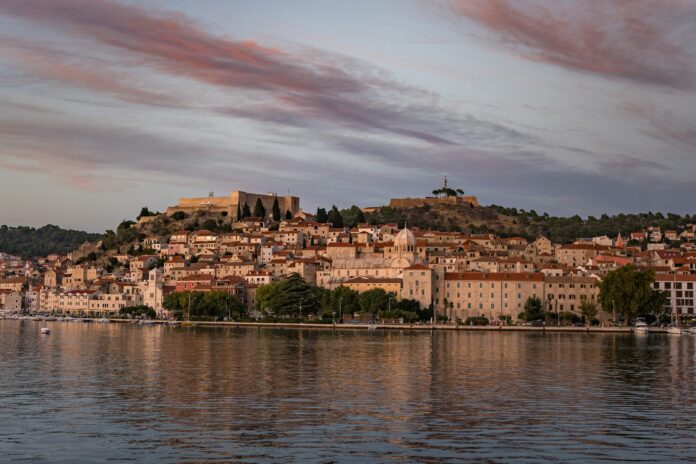On Crete’s north coast, Hersonissos sits at the heart of the island’s busiest tourist stretch, sandwiched between Heraklion and the party town of Malia. The harbour strip has its share of beach clubs, late-night bars and the kind of neon-lit cocktail menus that cater to a younger crowd – but focusing on that misses the point of what makes this corner of the island worth two days of anyone’s time.
The thing about Hersonissos is that it exists in layers. There’s the busy seafront, yes, but climb just five minutes into the hills and you’ll find yourself in villages so quiet you can hear goat bells across the valley. Ancient olive groves tumble down slopes towards a coastline that, away from the main beaches, breaks into hidden coves and sheltered bays where you might be the only swimmer all afternoon. A Minoan palace lies in ruins just down the road. An open-air museum preserves the island’s folk traditions.
And ten minutes in the other direction, the beach village of Analipsi offers exactly the kind of laid-back, taverna-lined simplicity that package tourists imagine when they book a Greek island holiday.
Here’s how to spend 48 hours discovering both sides of the coin.
Day One
Morning: The Hilltop Villages
Start by going uphill. The villages of Koutouloufari and Piskopiano sit on the slopes above modern Hersonissos, connected by cobbled lanes that wind between stone houses draped in bougainvillea. These settlements have been here since Byzantine times – Koutouloufari takes its name from a priest who offered refuge to villagers fleeing pirates – and they’ve retained their character even as the coast below transformed into a tourist resort.
Koutouloufari is arguably the prettier of the two, its narrow paved streets threading past arched doorways, vine-shaded courtyards and tiny squares where elderly locals still gather for morning coffee. There are no cars here, just footpaths that occasionally dead-end at someone’s front door. The views down to the sea are the kind you’ll keep stopping to photograph, though the real pleasure is simply wandering without a destination, ducking into ceramic workshops and letting the smell of jasmine guide you from one shaded corner to the next.
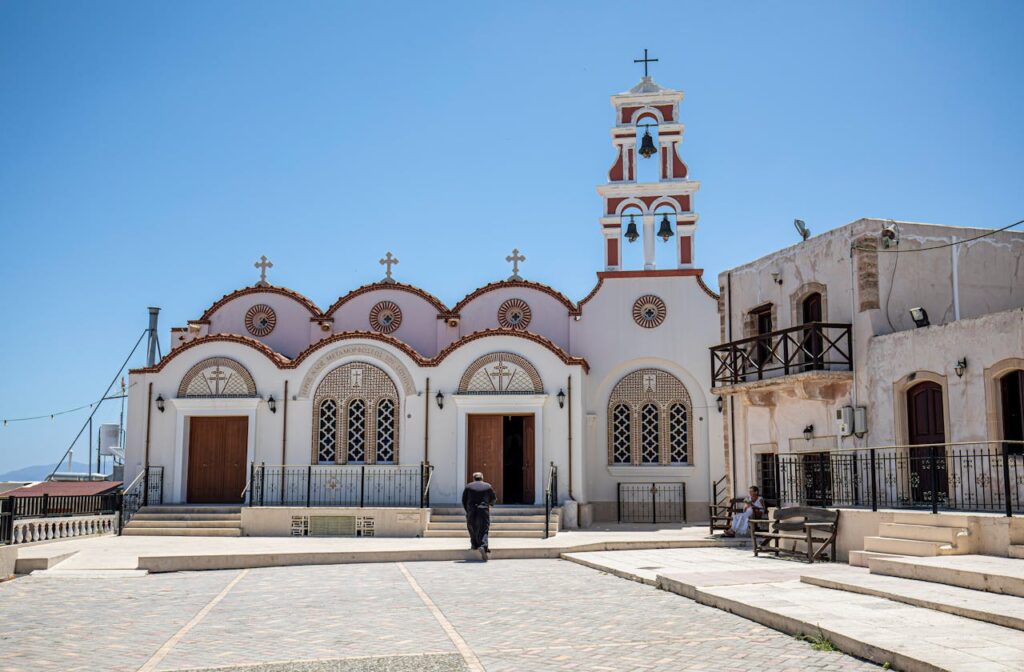
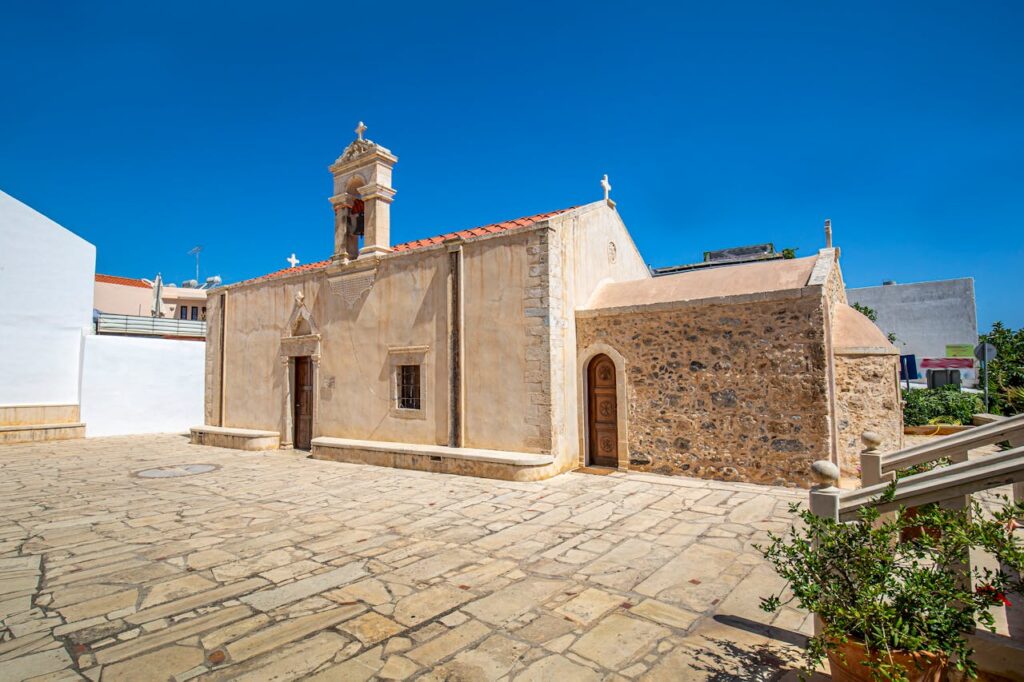
Piskopiano, a few hundred metres away, is slightly more developed but equally atmospheric. Its name derives from ‘piskopos’ – bishop – a nod to the old diocese of Hersonissos that once administered this region. The village church sits on a small square with restored guesthouses alongside, and the main street is lined with tavernas whose terraces look out over the rooftops to the coast below.
Lunch: Taverna Harakas
For lunch, Taverna Harakas in Ano Hersonissos (also known as Old Hersonissos) serves the kind of home-cooked Cretan food that explains why the island’s cuisine has its own UNESCO recognition.
The restaurant is family-run and has been for decades; the courtyard is shaded by vines, and the menu changes depending on what looked good at the market. Expect stifado rich with tomatoes and cinnamon, oven-baked lamb with potatoes, meatballs in lemon sauce, and a house special sauce that regulars return for year after year. The raki at the end of the meal is complimentary and non-negotiable.
Read: What local delicacies is Crete known for?

Afternoon: Lychnostatis Open Air Museum
After lunch, head to the Lychnostatis Open Air Museum, a labour of love created by a local ophthalmologist who spent seven years building it by hand with his family. The museum recreates a traditional Cretan village, complete with farmhouse, windmill, weaving workshop, olive press and herb garden, all constructed from local stone and wood without any mechanical equipment.
It sounds like it could be twee, but it isn’t. The buildings themselves are exhibits – designed to show how Cretans actually constructed their homes – and the guides are passionate locals who’ll explain everything from how natural dyes were made to why specific herbs were hung above doorways. On Wednesdays they host grape-treading demonstrations and wine tastings; there’s also an on-site café serving herb teas from the garden and homemade spoon sweets. Allow at least ninety minutes.
Evening: Sunset At Sarandaris Cape & Dinner In Koutouloufari
For sunset, make your way to Cape Sarandaris, the rocky headland west of Hersonissos harbour. A small path leads to the whitewashed chapel of Agios Giorgos, perched on the cliff’s edge with views across the coves below. The locals consider this the best sunset spot on this stretch of coast, and they’re not wrong – as the light drops, the limestone cliffs turn pink and gold, and the only sounds are waves and the occasional fishing boat heading back to port.
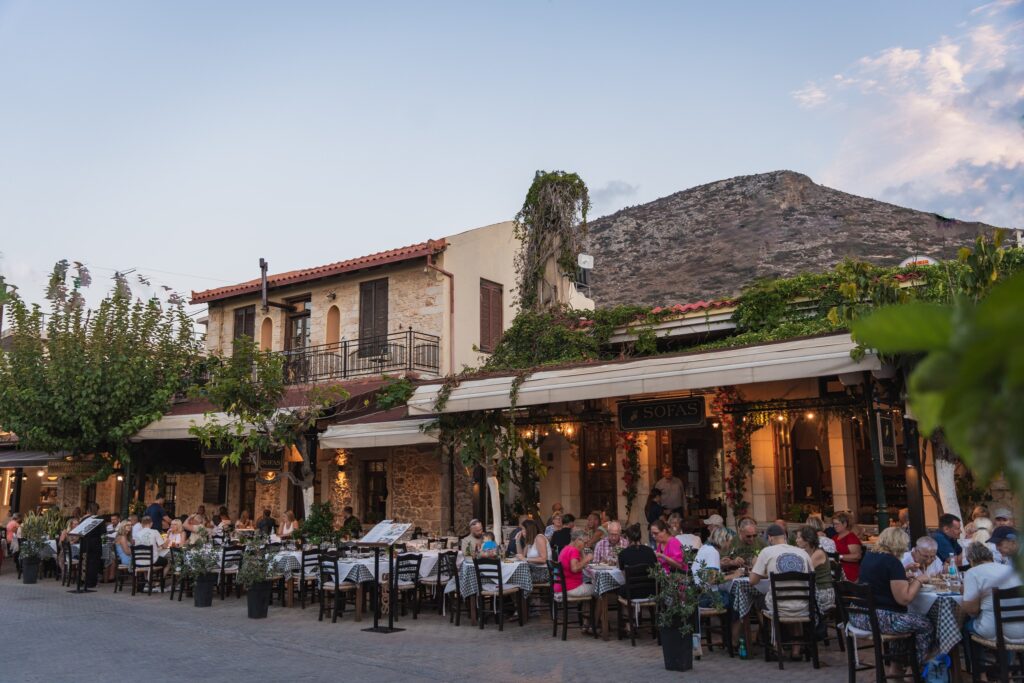
Dinner should be back in Koutouloufari, where a handful of excellent restaurants occupy the narrow streets. The Alchemist combines stone walls and candlelight with creative Cretan cooking – think slow-braised beef cheeks and grilled lamb with local cheeses – while Sofas Taverna, on the main square in Old Hersonissos, has been serving traditional meze and wood-fired dishes for generations. Book ahead in summer; tables fill quickly once the sun drops.
Day Two
Morning: The Palace Of Malia
Day two starts with the Minoans. The Palace of Malia, fifteen minutes east of Hersonissos, was the third-largest palace of Minoan Crete – smaller than Knossos but better preserved, and considerably less crowded. Built around 1900 BCE, destroyed by earthquake, rebuilt, then destroyed again around 1450 BCE, it offers a window into a civilization that predates classical Greece by over a millennium.
Start at the small on-site museum, where scale models show what the palace would have looked like at its peak – a labyrinthine complex of storerooms, workshops, royal apartments and ceremonial halls. The ruins themselves include some of the highest surviving walls of any Minoan site, along with giant pithoi (storage jars) that once held olive oil and wine. Look for the kernos – a circular stone with shallow depressions – thought to have been used for religious offerings. The famous gold bee pendant found here is now in Heraklion’s Archaeological Museum, but replicas are available in the gift shop.
Note: The site closes on Tuesdays and is undergoing restoration work until late 2025 – check opening times before you visit.
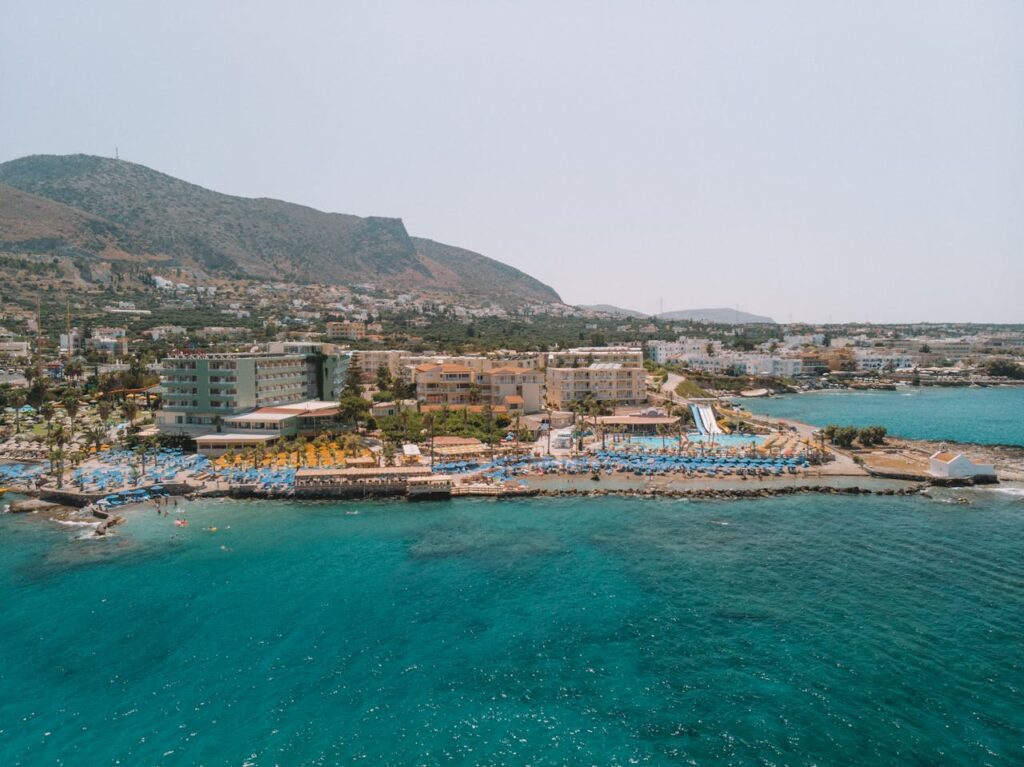
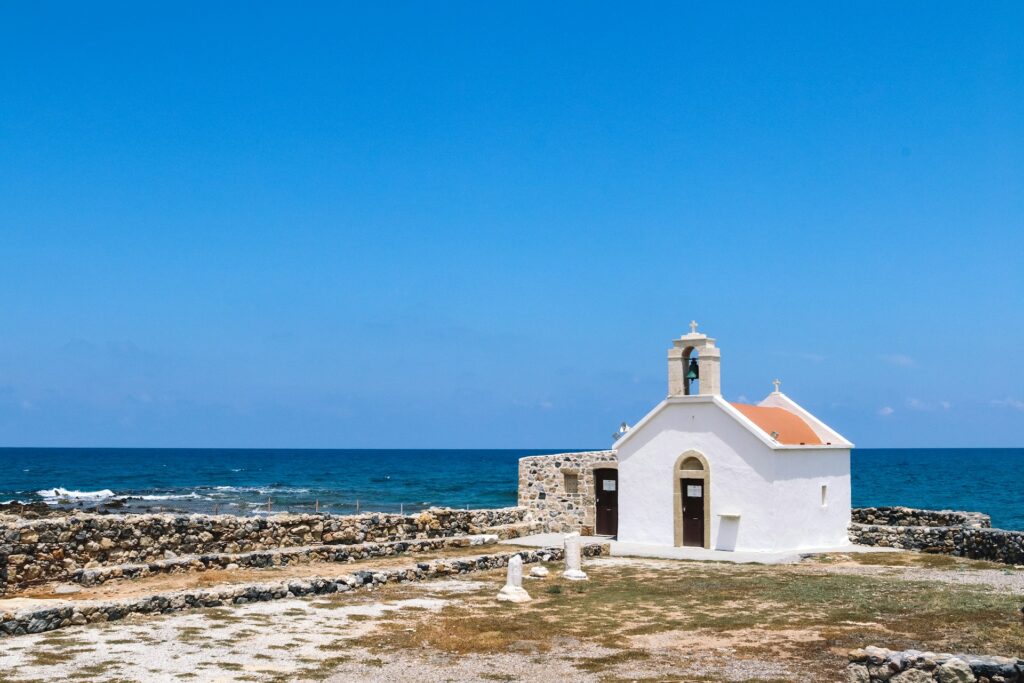
Afternoon: Analipsi & The Quieter Coast
Spend the afternoon at Analipsi, a ten-minute drive west of Hersonissos. If beach holidays are your ideal type of holiday, then Analipsi is the perfect destination for you – a kilometre-long stretch of Blue Flag sand backed by family hotels rather than nightclubs, with tavernas that still serve fish by the kilo rather than by the Instagram photo opportunity.
The main beach has sunbeds and umbrellas if you want them, but walk to either end and you’ll find quieter spots where the sand gives way to smooth rocks and the water is clear enough to snorkel without a mask. The village itself is small – a main street with a handful of restaurants, a pretty church right on the waterfront – but that’s the appeal.
Lunch at Sirtaki Tavern, where the family has been cooking since 1993: their slow-roasted kleftiko takes four hours and their Black Angus steaks are the best on this stretch of coast.
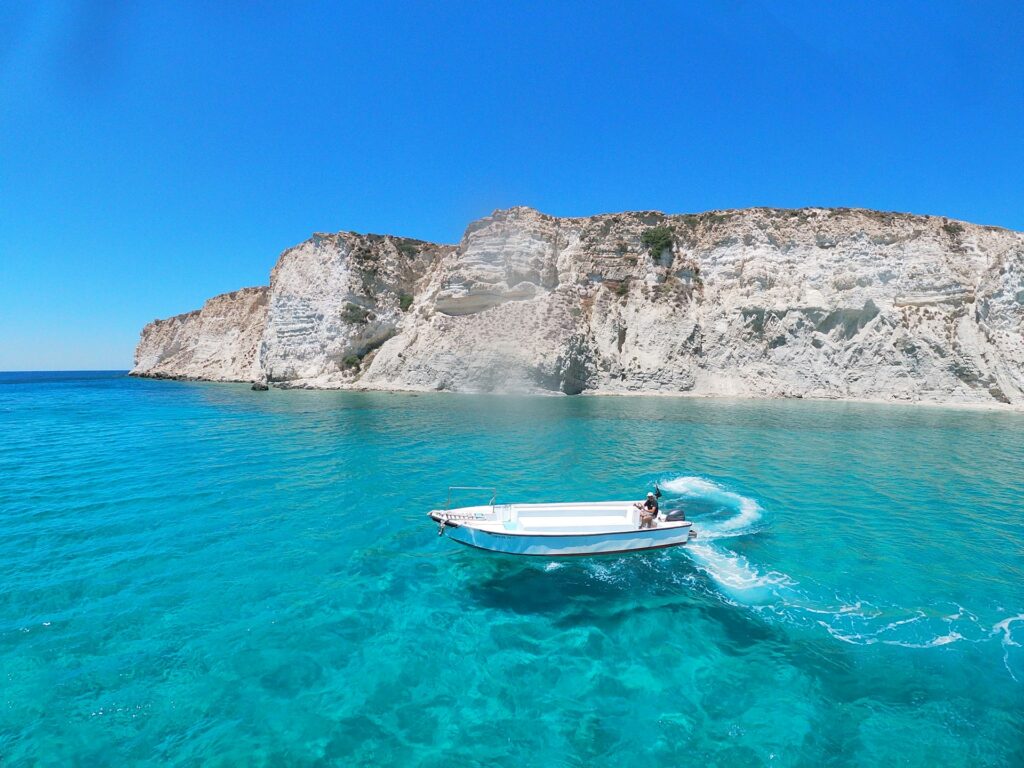
Late Afternoon: The Limanakia Coves
If you still have energy, explore the Limanakia Coves – a string of small bays between Cape Sarandaris and Hersonissos harbour, protected from the meltemi winds that can whip up the northern coast. The water here is shallow and absurdly blue, the sort of colour you assume has been Photoshopped until you see it in person. There are no facilities to speak of, just limestone cliffs, a few sunbathers and the occasional paddleboarder gliding past.
Evening: Dinner & Drinks
How you spend your final evening depends on what you’re after. For the quiet option, Akrogiali is a seafood taverna right on the harbour, run by the inimitable Manolis whose family has been here for generations – order the kalamari, the mussels and whatever the catch of the day happens to be, then walk the harbourside promenade as the lights come on.
For something livelier, Star Beach hosts foam parties and DJ sets that run until the early hours, while the main strip offers everything from Irish pubs to Greek music clubs. It’s not Malia – the crowd skews older and more mixed – but if you fancy a late one, the options are there.

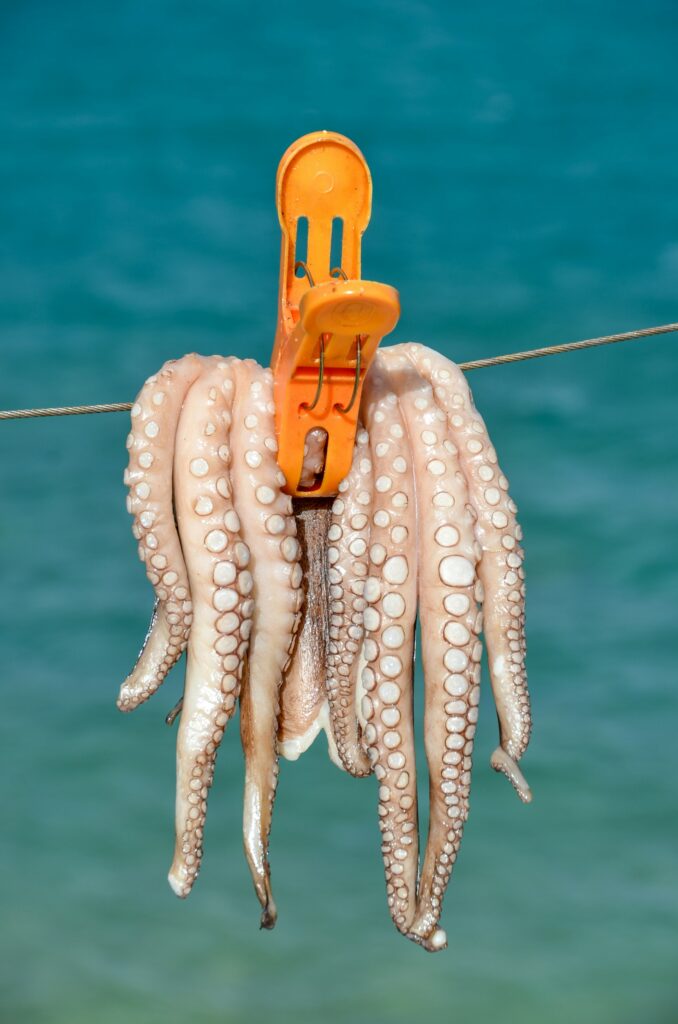
Where To Stay
Creta Maris Resort sits right on the beach with its own stretch of sand, multiple pools and a spa. It’s the kind of large resort that could feel anonymous, but the staff are genuinely warm and the location – close to the harbour but away from the strip – strikes a good balance.
For something smaller, Villa Ippocampi in Koutouloufari is a family-run hotel at the edge of the village, with a pool, a flower-filled garden and views down to the coast. The Dutch-Greek owners have been welcoming guests for decades and their recommendations are worth following.
The Bottom Line
Hersonissos rewards those willing to look beyond the obvious. The harbour strip is busy and unashamedly touristy, but that’s only one layer of what this stretch of coast offers. Climb into the hills and you’ll find Byzantine villages where time moves slowly. Drive ten minutes and you’re swimming off empty beaches or wandering through Minoan ruins older than classical Greece. The variety is the point: few places in Crete let you experience the ancient and the accessible, the serene and the sociable, within such easy reach of each other. Forty-eight hours is enough to discover what lies beneath the surface – and to realise there’s plenty more worth coming back for.




